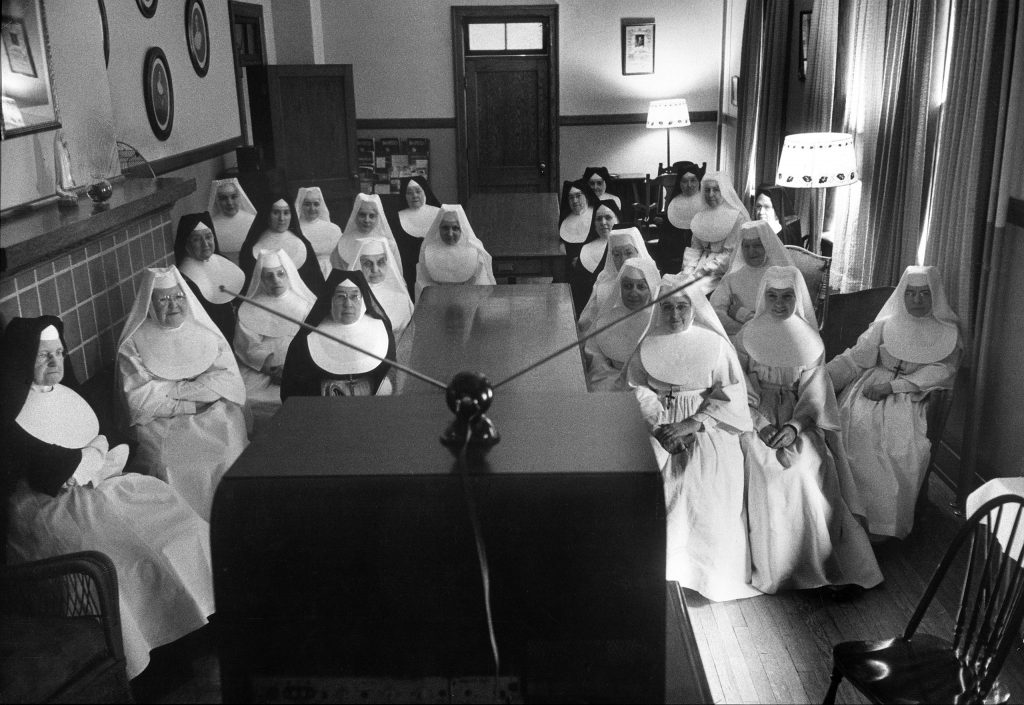Ask 20 random people, “What is the nature of time?” and chances are pretty good that you’ll get 20 different answers. Time is an arrow, says one. Time is a circle, suggests another. Time is relative. Time is an illusion.
But no matter how assured or unhesitating their answers might be, most people would be hard-pressed to offer a single, definitive method for illustrating time. Here, LIFE.com offers a selection of marvelous photographs, stroboscopic and otherwise, by the great Gjon Mili. These technically brilliant pictures fiddle with moments, junctures, sequences, and in the process offer a playful commentary on time.
“To see a world in a grain of sand,” William Blake once wrote, “and a heaven in a wild flower, hold infinity in the palm of your hand and eternity in an hour.” At their best, Gjon Mili’s stroboscopic photographs not only serve as a kind of modern adjunct to Blake’s vision; they also celebrate with an unsentimental, clear-eyed wonder the reality of sentient beings moving through both time and space.

Stroboscopic image of a trick shot by billiards champion Willie Hoppe in 1941.
Gjon Mili The LIFE Picture Collection/Shutterstock

Stroboscopic image of ballerina Nora Kaye performing a pas de bourrée in 1947.
Gjon Mili The LIFE Picture Collection/Shutterstock

Choreographer Martha Graham performs her own work at Gjon Mili’s studio, 1941.
Gjon Mili The LIFE Picture Collection/Shutterstock

Drummer Gene Krupa at Gjon Mili’s studio, 1941.
Gjon Mili The LIFE Picture Collection/Shutterstock

United States pentathlon champion John Borican leaps a hurdle in 1941.
Gjon Mili The LIFE Picture Collection/Shutterstock

A nude descends a staircase, 1942
Gjon Mili The LIFE Picture Collection/Shutterstock

New York Giants pitcher Carl Hubbell throws a curve ball, 1940.
Gjon Mili The LIFE Picture Collection/Shutterstock

Dancer and actor Gene Kelly in a multiple-exposure dance sequence from the movie Cover Girl, 1944.
Gjon Mili The LIFE Picture Collection/Shutterstock

FBI agent Del Bryce draws his gun, 1945.
Gjon Mili The LIFE Picture Collection/Shutterstock

Rope-skipping champion Gordon Hathaway in action, 1947.
Gjon Mili The LIFE Picture Collection/Shutterstock

Multiple exposure photograph of Pablo Picasso using a small flashlight to “draw” a figure in the air in 1949.
Gjon Mili The LIFE Picture Collection/Shutterstock

Stroboscopic image of Martha Graham dancer Ethel Butler in 1941.
Gjon Mili The LIFE Picture Collection/Shutterstock

Sammy Davis Jr. as “Sportin’ Life” in the MGM production of Porgy and Bess, 1958.
Gjon Mili The LIFE Picture Collection/Shutterstock

Stan Cavenaugh juggles tenpins, 1941.
Gjon Mili The LIFE Picture Collection/Shutterstock

Stroboscopic image of the head and shoulders of a model wearing an elaborate hat and jewelry, 1946.
Gjon Mili The LIFE Picture Collection/Shutterstock

Stroboscopic image of New York University fencing champion Arthur Tauber (left) parrying with Sol Gorlin, 1942.
Gjon Mili The LIFE Picture Collection/Shutterstock

Stroboscopic image showing a repetitive closeup of Isaac Stern playing violin at photographer Gjon Mili’s studio in 1959.
Gjon Mili The LIFE Picture Collection/Shutterstock

Stroboscopic image of choreographer George Balanchine watching New York City Ballet dancers rehearse in 1965.
Gjon Mili The LIFE Picture Collection/Shutterstock




























































































